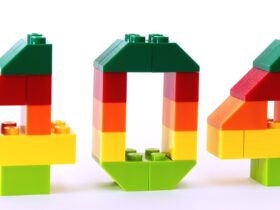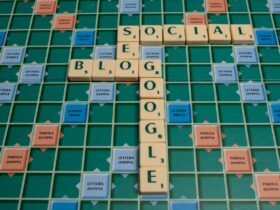Dieser Artikel diskutiert die Bedeutung eines Eyecatchers im Design und Marketing und wie er Aufmerksamkeit erregen und das Publikum ansprechen kann. Ein Eyecatcher ist ein visuelles Element, das hervorsticht und die Aufmerksamkeit des Betrachters auf sich zieht. Es kann ein fett gedrucktes Bild, eine fesselnde Überschrift oder ein markantes Designelement sein. In diesem Artikel werden wir die Rolle eines Eyecatchers genauer betrachten und erläutern, wie er dazu beitragen kann, das Interesse des Publikums zu wecken und aufrechtzuerhalten.
The Role of an Eyecatcher
An eyecatcher is a visual element that stands out and grabs the viewer’s attention. It can be a bold image, a captivating headline, or a striking design element. Eyecatchers are like the fireworks of the design world, instantly capturing our attention and drawing us in. Just as a firework explodes in a burst of color and light, an eyecatcher surprises and delights us, creating a moment of excitement and intrigue.
But an eyecatcher is not just about grabbing attention; it also plays a crucial role in retaining audience interest. Like a magnet, it pulls us in and keeps us engaged, making us want to explore further. It acts as a hook, capturing our curiosity and encouraging us to delve deeper into the content or message it represents.
Think of an eyecatcher as a friendly wink that says, „Hey, look at me!“ It’s the first impression that sets the tone for the entire design or marketing piece. Whether it’s a website, a print ad, or a social media post, an eyecatcher is the gateway to capturing the audience’s attention and making a lasting impact.
So, the next time you’re designing or creating content, remember the power of the eyecatcher. Be bold, be captivating, and be memorable. Surprise and explode onto the scene with an eyecatcher that leaves a lasting impression on your audience.
Designing Effective Eyecatchers
Creating an impactful eyecatcher requires careful consideration of color, composition, and typography. By using these key principles and techniques, you can design eyecatching visuals that effectively communicate your intended message and leave a lasting impression.
First and foremost, color plays a crucial role in capturing attention. Different colors evoke different emotions and can have a powerful impact on viewer perception. By understanding color psychology, you can strategically choose colors that resonate with your target audience and enhance the overall impact of your design.
Composition is another important aspect to consider. The arrangement of elements within your eyecatcher can guide the viewer’s attention and highlight the most important elements. Utilizing contrast and hierarchy can create visual interest and ensure that your eyecatcher stands out.
Typography is a powerful tool in creating an effective eyecatcher. The choice of font, size, and style can greatly impact how your message is conveyed and captured. Experimenting with different typography options can help you find the perfect combination that grabs attention and conveys your desired message.
Remember, an eyecatcher should not only capture attention but also engage the audience. Consider incorporating storytelling, interactivity, and personalization into your design to create immersive and memorable experiences. By utilizing these techniques, you can create eyecatchers that not only grab attention but also leave a lasting impression on your audience.
Color Psychology and Eyecatchers
Verschiedene Farben lösen unterschiedliche Emotionen aus und haben unterschiedliche Auswirkungen auf die Wahrnehmung des Betrachters. Diese Unterschrift erforscht, wie Farbpsychologie genutzt werden kann, um Eyecatcher zu schaffen, die bei der Zielgruppe Anklang finden und die Gesamtwirkung eines Designs verbessern.
Using Contrast and Hierarchy
Contrast and hierarchy are key elements in creating visually appealing and engaging eyecatchers. By strategically utilizing contrast, such as combining light and dark colors or using contrasting shapes, you can direct the viewer’s attention to specific areas of the design. This helps highlight the most important elements and create a strong visual impact.
Hierarchy, on the other hand, refers to the arrangement and organization of elements within the eyecatcher. By establishing a clear hierarchy, you can guide the viewer’s eye and ensure that the most important information stands out. This can be achieved through variations in size, font weight, or placement of elements.
To further illustrate the concept of contrast and hierarchy, let’s take a look at an example:
| Element | Contrast | Hierarchy |
|---|---|---|
| Headline | Large, bold font | Placed at the top |
| Background | Dark color | Provides a backdrop for other elements |
| Call-to-action button | Bright color | Placed prominently |
In this example, the contrast between the headline and background color makes the headline stand out, while the placement at the top establishes its importance. The call-to-action button, with its bright color and prominent placement, further emphasizes its significance within the design.
By understanding and implementing contrast and hierarchy effectively, you can create eyecatchers that not only capture attention but also guide the viewer’s focus to the most important elements, ensuring maximum impact and engagement.
Typography and Eyecatchers
Typography is a powerful tool in creating an effective eyecatcher. When it comes to capturing attention and conveying the desired message in an eyecatching design, font choice, size, and style play a crucial role.
Choosing the right font is essential. It should align with the overall tone and message of the design. A bold and impactful font can instantly grab the viewer’s attention, while a more elegant and sophisticated font can convey a sense of professionalism and luxury.
The size of the typography also matters. A larger font size can make a statement and draw the eye, while a smaller font size can be used for more detailed information. It’s important to strike a balance between legibility and visual impact.
Additionally, the style of the typography can enhance the eyecatcher’s effectiveness. Whether it’s a clean and modern sans-serif font or a decorative and ornate script font, the style should complement the overall design and help convey the intended message.
By carefully considering font choice, size, and style, designers can create eyecatchers that not only capture attention but also effectively communicate the desired message to the audience.
Engaging the Audience with Eyecatchers
Ein Eyecatcher sollte nicht nur die Aufmerksamkeit erregen, sondern auch das Publikum einbinden. In diesem Abschnitt werden Techniken wie Storytelling, Interaktivität und Personalisierung erkundet, die verwendet werden können, um mit Hilfe von auffälligen Designs immersive und unvergessliche Erlebnisse zu schaffen.
Storytelling ist eine effektive Methode, um das Publikum in den Bann zu ziehen. Durch die Verwendung von fesselnden Geschichten und Narrativen können Eyecatcher eine emotionale Verbindung herstellen und die Aufmerksamkeit des Publikums aufrechterhalten. Eine gut erzählte Geschichte kann die Botschaft des Designs verstärken und das Publikum dazu bringen, sich tiefer mit dem Inhalt auseinanderzusetzen.
Interaktivität ist eine weitere Möglichkeit, das Publikum einzubeziehen und eine aktive Teilnahme zu fördern. Durch die Integration von interaktiven Elementen wie Umfragen, Quizzen oder Spielen können Eyecatcher das Publikum dazu anregen, aktiv mit dem Design zu interagieren. Diese Art von Engagement kann das Interesse des Publikums steigern und eine längere Verweildauer auf der Website oder in der digitalen Umgebung fördern.
Personalisierung ist ein weiterer Ansatz, um das Publikum anzusprechen und eine individuelle Verbindung herzustellen. Durch die Verwendung von personalisierten Inhalten oder Angeboten können Eyecatcher das Publikum direkt ansprechen und eine persönliche Relevanz schaffen. Dies kann das Interesse des Publikums steigern und eine stärkere Bindung an die Marke oder das Unternehmen fördern.
Zusammenfassend können Techniken wie Storytelling, Interaktivität und Personalisierung dazu beitragen, dass Eyecatcher nicht nur die Aufmerksamkeit erregen, sondern auch das Publikum einbinden und einzigartige Erlebnisse schaffen. Durch den gezielten Einsatz dieser Techniken können Unternehmen ihre Botschaft effektiv kommunizieren und eine lang anhaltende Wirkung erzielen.
Examples of Successful Eyecatchers
Dieser Abschnitt präsentiert Beispiele von Eyecatchern, die erfolgreich Aufmerksamkeit erregt, Botschaften effektiv vermittelt und ihre beabsichtigten Ziele erreicht haben. Dabei werden die vielfältigen Branchen und Medien hervorgehoben, in denen Eyecatcher eine große Wirkung erzielt haben.
Um die Vielfalt der erfolgreichen Eyecatcher zu verdeutlichen, werden verschiedene Beispiele aus der Praxis vorgestellt. In der Printwerbung haben Eyecatcher schon lange dazu gedient, auf überfüllten Seiten hervorzustechen und Leser zu fesseln. Sie haben maßgeblich zur Markenbekanntheit und Kundenbindung beigetragen. Im digitalen Marketing sind Eyecatcher unerlässlich, um inmitten des ständigen Informationsflusses Aufmerksamkeit zu erregen. Erfolgreiche Eyecatcher in digitalen Marketingkampagnen umfassen Website-Banner, Social-Media-Beiträge und E-Mail-Newsletter.
Die Beispiele zeigen, wie Eyecatcher in verschiedenen Branchen und Medien eingesetzt werden können, um eine starke visuelle Wirkung zu erzielen und die gewünschten Ziele zu erreichen. Sie dienen als Inspiration und zeigen, wie kreative und ansprechende Eyecatcher die Aufmerksamkeit des Publikums auf sich ziehen und die gewünschten Botschaften effektiv vermitteln können.
Print Advertising and Eyecatchers
Print advertising has always been a battlefield of attention, with eyecatchers serving as the ultimate weapon to stand out and captivate readers. In a world filled with crowded pages and competing brands, it is crucial to have an eyecatcher that grabs attention and leaves a lasting impression. Whether it’s a striking image, a bold headline, or a unique design element, eyecatchers in print ads have the power to stop readers in their tracks and make them take notice.
Notable examples of eyecatchers in print ads can be found across various industries, from fashion and beauty to automotive and technology. These eyecatchers are carefully crafted to align with the brand’s identity and messaging, while also capturing the essence of the product or service being advertised. They use vibrant colors, creative compositions, and compelling visuals to create a visual impact that is hard to ignore.
But eyecatchers in print ads are not just about grabbing attention. They also play a crucial role in brand recognition and consumer engagement. A well-designed eyecatcher can create a strong association between the brand and the message, making it memorable and instantly recognizable. It can also evoke emotions and create a connection with the audience, driving them to take action and engage with the brand further.
Overall, eyecatchers in print advertising are an essential tool for brands to cut through the noise and make a lasting impression. They have the power to transform a simple ad into a captivating experience that resonates with the target audience and drives results. So next time you come across a print ad, pay attention to the eyecatcher and see how it captures your attention and leaves a lasting impact.
Digital Marketing and Eyecatchers
In der digitalen Welt sind Eyecatcher unverzichtbar, um Aufmerksamkeit inmitten des ständigen Informationsflusses zu erregen. Diese Unterüberschrift untersucht erfolgreiche Eyecatcher in digitalen Marketingkampagnen, einschließlich Website-Bannern, Social-Media-Beiträgen und E-Mail-Newslettern.
Die Rolle eines Eyecatchers
Ein Eyecatcher ist ein visuelles Element, das heraussticht und die Aufmerksamkeit des Betrachters auf sich zieht. Es kann ein auffälliges Bild, eine fesselnde Überschrift oder ein markantes Designelement sein. Ein Eyecatcher spielt eine wichtige Rolle, um das Interesse des Publikums zu wecken und zu halten. Er ist das erste, was die Aufmerksamkeit der Betrachter auf sich zieht und sie dazu bringt, sich mit dem Inhalt oder Produkt auseinanderzusetzen.
Die Gestaltung von effektiven Eyecatchern
Die Schaffung eines wirkungsvollen Eyecatchers erfordert sorgfältige Überlegungen zu Farbe, Komposition und Typografie. Die richtige Farbwahl kann Emotionen hervorrufen und die Wahrnehmung des Betrachters beeinflussen. Ein Eyecatcher sollte durch den Einsatz von Kontrast und Hierarchie visuell ansprechend und einprägsam sein. Die Wahl der Schriftart, -größe und -stil spielt ebenfalls eine wichtige Rolle, um die Aufmerksamkeit zu erregen und die gewünschte Botschaft zu vermitteln.
Die Einbindung des Publikums mit Eyecatchern
Ein Eyecatcher sollte nicht nur die Aufmerksamkeit erregen, sondern auch das Publikum einbinden. Durch Techniken wie Storytelling, Interaktivität und Personalisierung können immersive und unvergessliche Erlebnisse geschaffen werden. Ein Eyecatcher kann eine Geschichte erzählen, den Betrachter zum Mitmachen animieren oder individuell auf ihn abgestimmt sein. Diese Elemente schaffen eine emotionale Verbindung zwischen dem Betrachter und dem Inhalt oder Produkt.
Beispiele für erfolgreiche Eyecatcher
In verschiedenen Branchen und Medien wurden erfolgreich Eyecatcher eingesetzt, um Aufmerksamkeit zu erregen, Botschaften effektiv zu vermitteln und ihre Ziele zu erreichen. Im Bereich der Printwerbung haben Eyecatcher lange Zeit dazu gedient, auf überfüllten Seiten hervorzustechen und Leser zu fesseln. Im digitalen Marketing sind Eyecatcher unverzichtbar, um inmitten des ständigen Informationsflusses Aufmerksamkeit zu erregen. Sie werden in Website-Bannern, Social-Media-Beiträgen und E-Mail-Newslettern erfolgreich eingesetzt.

















Eine Antwort hinterlassen